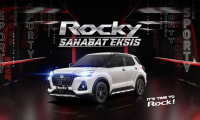Jl. Inspeksi Saluran Kalimalang Kav Agraria No.15 Duren Sawit Jakarta Timur
How Visual Cues Guide Our Choices in Daily Life
Every day, our decisions—whether conscious or subconscious—are heavily influenced by visual cues present in our environment. These cues shape perceptions, trigger emotional responses, and often steer us toward specific choices without our explicit awareness. Understanding how visual stimuli impact human cognition can empower us to make more intentional decisions and design environments that promote positive outcomes.
- The Psychology Behind Visual Cues: How Our Brains Interpret and Respond
- Common Visual Cues in Daily Life and Their Impact on Choices
- Cultural and Contextual Factors in Interpreting Visual Cues
- Visual Cues in Marketing and Consumer Behavior
- Interactive and Modern Examples of Visual Cues Guiding Choices
- The Role of Visual Cues in Risk and Reward Decisions
- Non-Obvious Dimensions: Emotional and Subconscious Responses to Visual Cues
- Applying Knowledge of Visual Cues to Improve Personal and Professional Decision-Making
- Conclusion: Harnessing the Power of Visual Cues Responsibly
The Psychology Behind Visual Cues: How Our Brains Interpret and Respond
Humans process visual stimuli through complex cognitive pathways that quickly assess meaning and relevance. When we see a familiar symbol or color, our brain activates associated memories and emotions, often without conscious awareness. This subconscious processing allows visual cues to influence our behaviors efficiently. For example, a red stop sign triggers immediate recognition and a reflexive response, illustrating how visual stimuli are wired into our decision-making circuits.
Examples of Subconscious Influence
- Brightly colored packaging can evoke feelings of excitement or urgency, prompting quicker purchasing decisions.
- Icons like a shopping cart or a magnifying glass are universally recognized symbols that guide user actions online.
- Layout and placement of items can subtly suggest importance, influencing what we notice first.
Common Visual Cues in Daily Life and Their Impact on Choices
Color Psychology: Red, Green, and Their Influence on Behavior
Color plays a pivotal role in shaping our responses. Red, often associated with urgency and passion, can increase heart rates and stimulate appetite, making it a popular choice in fast-food branding. Conversely, green symbolizes health, calmness, and sustainability, often used by organic brands and eco-friendly initiatives. These associations are backed by extensive research, such as a study published in the Journal of Environmental Psychology, which found that color cues significantly affect consumer perceptions and behaviors.
Symbols and Icons: Conveying Meaning Quickly
Universal symbols like the Wi-Fi icon, email envelope, or social media logos communicate complex ideas instantly. Their design leverages shared cultural understandings, enabling rapid recognition and action. This is why digital interfaces rely heavily on icons to streamline user navigation, reducing cognitive load and enhancing user experience.
Layout and Positioning: The Importance of Visual Hierarchy
The arrangement of elements influences where our eyes are drawn first, guiding our focus and decisions. For instance, products placed at eye level in a store are more likely to be chosen. Similarly, websites use visual hierarchy—size, color, and placement—to emphasize certain sections, subtly steering user behavior.
Cultural and Contextual Factors in Interpreting Visual Cues
Variations Across Cultures and Their Implications
Visual cues are not universally interpreted the same way. For example, while the color white symbolizes purity in Western cultures, it is associated with mourning in many Asian societies. Such differences can affect marketing strategies, product design, and communication efforts. Recognizing cultural nuances is essential for effective visual messaging.
Contextual Cues and the Environment’s Role in Guiding Decisions
The environment provides contextual visual cues that influence behavior. For example, dim lighting can create a cozy atmosphere encouraging lingering, while bright, energetic lighting prompts activity. Retail environments often use subtle cues like scent and layout to enhance shopping experiences and guide customer choices seamlessly.
Visual Cues in Marketing and Consumer Behavior
Packaging Design and Visual Branding Influences
Effective packaging employs color, typography, and imagery to communicate brand identity and influence perceptions. For instance, minimalistic packaging often suggests luxury, while vibrant designs attract attention and convey energy. Consider how premium brands use subdued color palettes to evoke sophistication, whereas playful brands opt for bold, bright visuals.
Store Layouts and Product Placement Strategies
Retailers strategically position products to maximize visibility and sales. High-margin items are often placed at eye level, and impulse buy sections are situated near checkout counters. Such arrangements leverage visual cues to influence purchasing patterns, often subconsciously.
Examples: Pinateros as Modern Visual Cues in Social Settings
In social contexts, symbols like the pinateroz 2 pin serve as visual cues that communicate cultural identity, mood, or social affiliation. These small pins can influence group dynamics, signaling shared values or interests subtly. As modern illustrations of timeless principles, they demonstrate how simple visuals can carry significant social meaning.
Interactive and Modern Examples of Visual Cues Guiding Choices
Digital Interfaces and Icons Guiding User Navigation
Today’s digital environments rely heavily on visual cues. Icons serve as intuitive guides that facilitate seamless navigation. For example, a trash bin icon universally signals deletion, streamlining user interactions without the need for text labels.
Augmented Reality and Visual Prompts in Decision-Making
Augmented reality (AR) enhances real-world environments with visual cues that influence choices. For example, AR shopping apps overlay product information onto physical items, guiding consumer decisions by providing additional visual context in real time.
Example: Crossed Maracas as Cultural Cues
Symbols like crossed maracas evoke cultural associations with rhythm and dance, subtly signaling a festive or lively atmosphere. Such visual cues shape perceptions and behaviors within cultural and social settings, illustrating how simple icons carry layered meanings.
The Role of Visual Cues in Risk and Reward Decisions
Visual Indicators Signaling Risk Levels
In gambling or gaming environments, visual cues such as flashing lights, color changes, or progress bars communicate risk levels instantly. For example, a red warning symbol may indicate danger, prompting caution, whereas bright green signals safety or reward potential.
Visual Cues as Instantaneous Decision Triggers
Designers utilize visual cues like full-grid completions with multipliers to reinforce positive outcomes. These cues act as immediate feedback, encouraging continued engagement and influencing risk-taking behaviors.
Non-Obvious Dimensions: Emotional and Subconscious Responses to Visual Cues
Emotional Associations and Their Influence on Choices
Colors, symbols, and imagery evoke emotional responses that can bias our decisions. For example, warm tones like orange and red can elicit excitement or urgency, while cool shades like blue promote calmness and trust. These emotional reactions often operate below conscious awareness but significantly impact behavior over time.
Subconscious Biases Activated by Visual Patterns and Symbols
Repeated exposure to specific visual patterns can lead to subconscious biases, such as favoring brands with certain color schemes or logos. Over time, these biases shape preferences without explicit recognition, demonstrating the subtle but powerful influence of visual cues.
Applying Knowledge of Visual Cues to Improve Personal and Professional Decision-Making
Recognizing and Interpreting Cues in Everyday Encounters
Being aware of visual cues such as body language, color cues, or environmental signals can help navigate social interactions more effectively. For instance, noticing a smile or open posture indicates receptiveness, guiding our responses accordingly.
Designing Environments with Intentional Visual Cues
Organizations can craft spaces that foster desired behaviors by intentionally using visual cues. For example, well-lit areas encourage activity, while calming colors promote relaxation. Thoughtful placement of signage, lighting, and layout can significantly influence outcomes.
Case Study: Enhancing Engagement through Visual Cues
In retail, strategic placement of products and visual cues like signage and lighting can improve customer engagement. Implementing subtle cues—such as a color scheme aligned with brand identity—can create a cohesive experience that guides consumers naturally towards desired behaviors, as exemplified by modern social settings where visual symbols foster community and interaction.
Conclusion: Harnessing the Power of Visual Cues Responsibly
“Understanding and ethically applying visual cues can enhance decision-making, foster positive behaviors, and create more engaging environments. As our world becomes increasingly visual, awareness of these subtle influences is vital.”
While visual cues are powerful tools, their ethical use is crucial. Manipulating perceptions without transparency can lead to distrust or adverse outcomes. Developing awareness of how visual stimuli influence us enables more conscious choices and fosters environments that support well-being and authenticity.
In essence, visual cues form an integral part of human cognition, shaping our daily lives in profound yet often unnoticed ways. Recognizing their influence allows us to navigate the world more intentionally, whether in personal interactions, marketing, or societal design.

Cell phone Experience Showdown Involving Katana Spin as well as Top Alternatives
In the rapidly evolving world associated with mobile applications, customer experience (UX) offers become a critical factor influencing user retention and full satisfaction. As developers endeavor to create perceptive and efficient software, understanding how distinct platforms compare inside design, performance,... selengkapnya

Dosaggio del Testosterone Propionate 100: Guida Completa
Il testosterone propionato è uno degli esterificati di testosterone più popolari, soprattutto tra bodybuilder e atleti. Il suo effetto rapido e la possibilità di un uso flessibile lo rendono un’opzione interessante per chi desidera migliorare le proprie prestazioni fisiche. In... selengkapnya

How Ancient Symbols Influence Modern Games Like Le Zeus #13
1. Introduction to Ancient Symbols and Their Cultural Significance Throughout human history, symbols have played a fundamental role in expressing collective identities, religious beliefs, and mythological narratives. Ancient symbols—such as the Egyptian ankh, the Greek omega, or the Norse runes—originated... selengkapnya















 Users Today : 17
Users Today : 17 Users Yesterday : 22
Users Yesterday : 22 Total Users : 19953
Total Users : 19953 Views Today : 21
Views Today : 21 Views Yesterday : 25
Views Yesterday : 25 Total views : 33102
Total views : 33102
Belum ada komentar